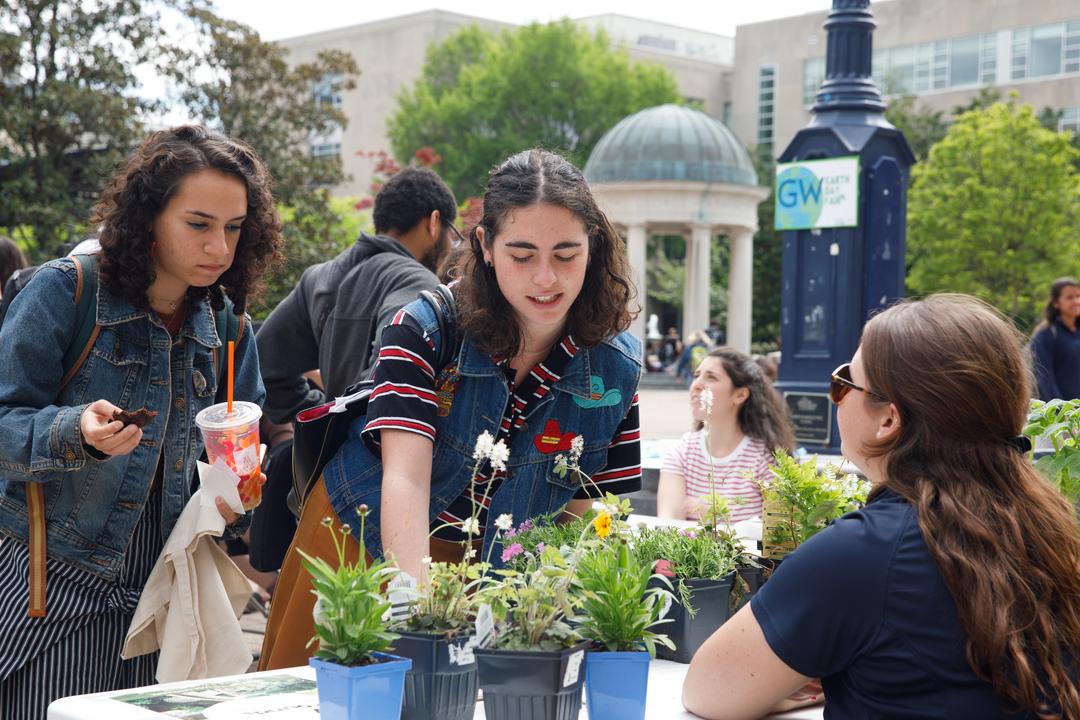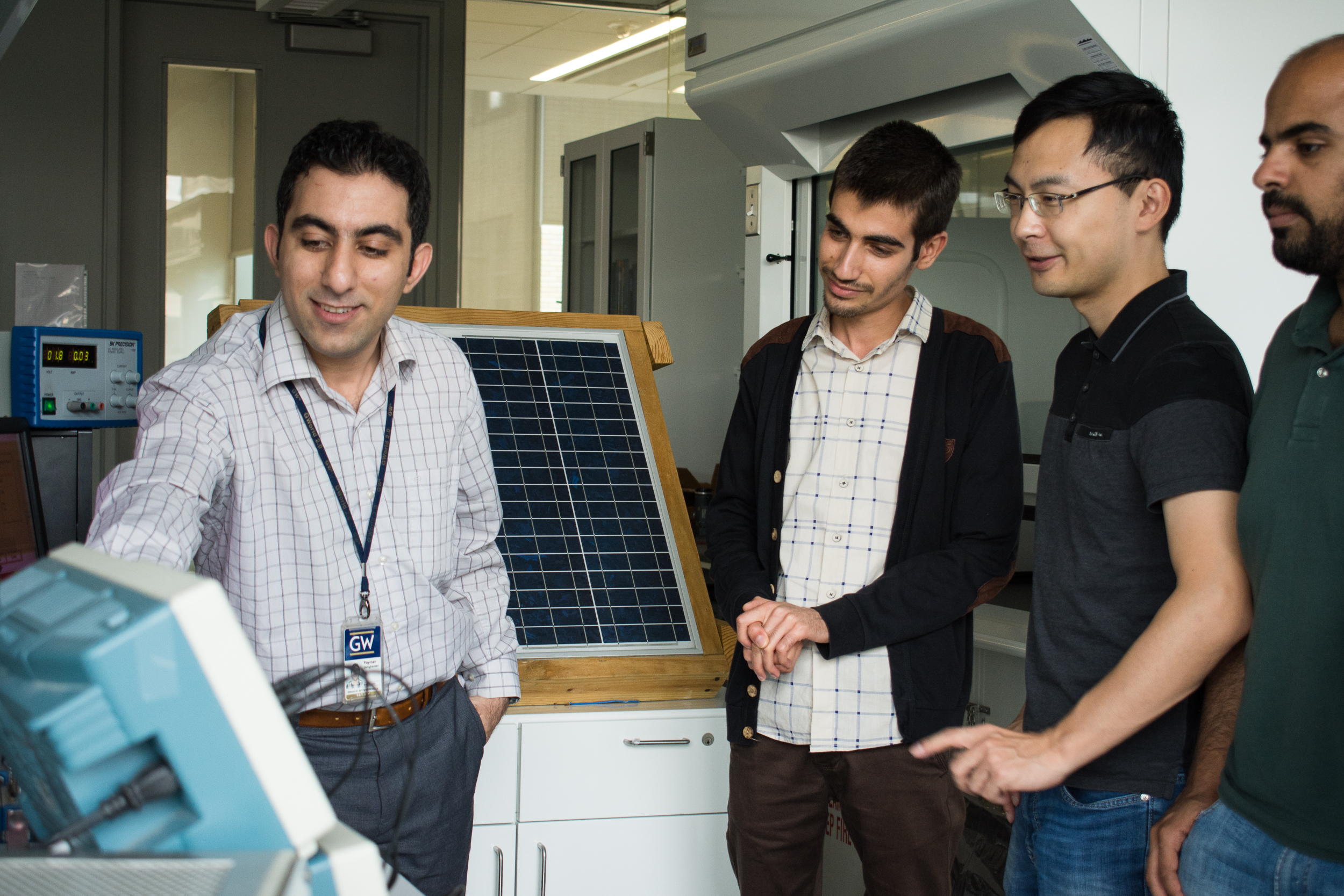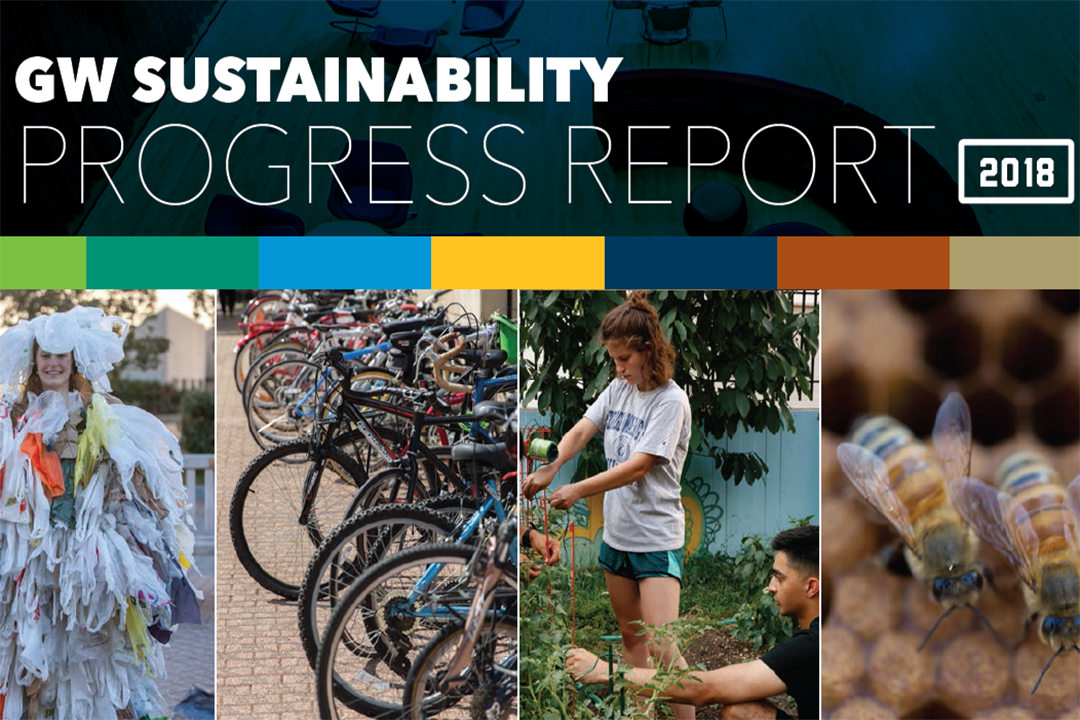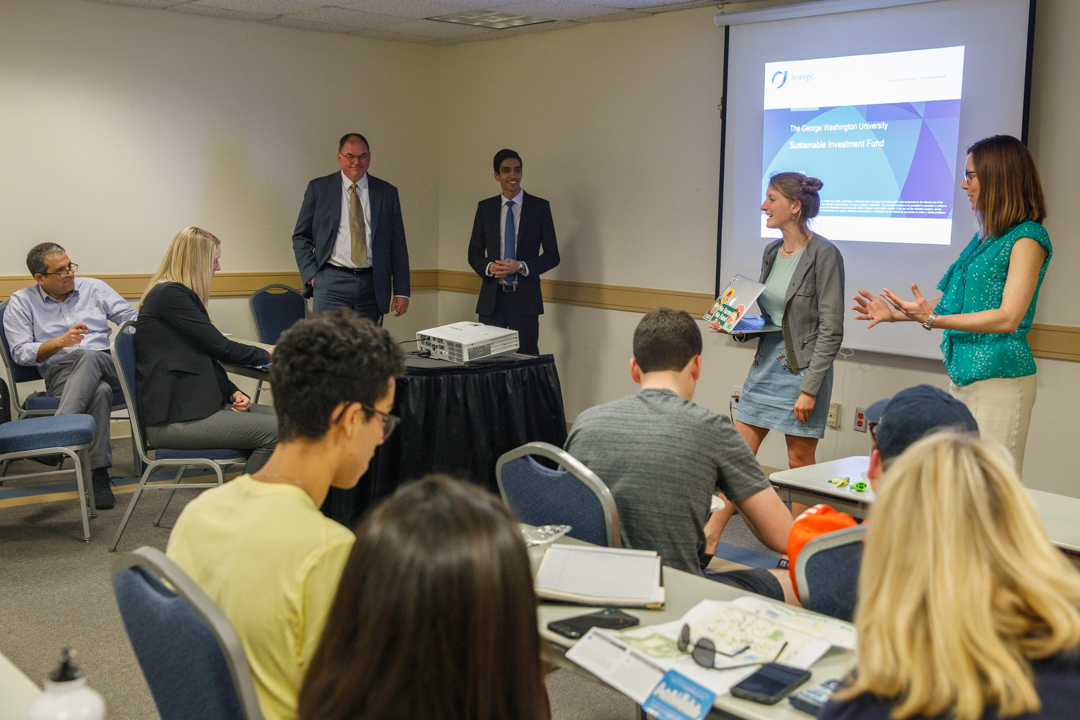The George Washington University has made strides toward its sustainability goals through a series of initiatives over the years, including committing to solar energy, reducing greenhouse gas emissions and decreasing the amount of waste generated by the GW community.
For example, between 2008 and 2016, GW saw a 28 percent decrease in its greenhouse gas emissions.
Because of these and other initiatives, the university is on track to meet its goal of a 40 percent reduction in greenhouse gas emissions by 2024 and will continue striving to become carbon neutral by 2040.
Since 2012, hundreds of undergraduate students interested in sustainability solutions have taken courses in the sustainability minor sequence. Through interdisciplinary coursework, students have worked on ways to reduce waste and save wildlife, pushing the impact of the sustainability minor beyond the GW campus.
GW’s sustainability efforts also can be seen through its progress in landscaping, waste diversion, water consumption and food composting.
Highlights of GW’s sustainability successes include:
- Incubating student-led initiatives through Climathon and Eco Equity Challenge that address food access, solid waste, and climate change
- Updating landscape in student gathering spaces on campus including Anniversary Park
- Installing energy efficient lighting from LEED-certified buildings on GW campuses
- Exceeding targets in low-carbon technology generation and waste diversion for 2040 and 2020, respectively
- Installing solar thermal hot water systems atop some residence halls and other campus buildings
- Partnering with Duke Energy Renewables on a solar farm project of 243,000 solar panels in North Carolina, which allows the university to be 50 percent solar-powered
- Cooperating with Neighborhood Solar Equity this summer to install solar panels on some Foggy Bottom campus buildings that contribute to solar energy in the city
- Establishing a Sustainable Investment Fund through the university’s endowment, which allows the university to invest in green technology, water infrastructure and pollution control





